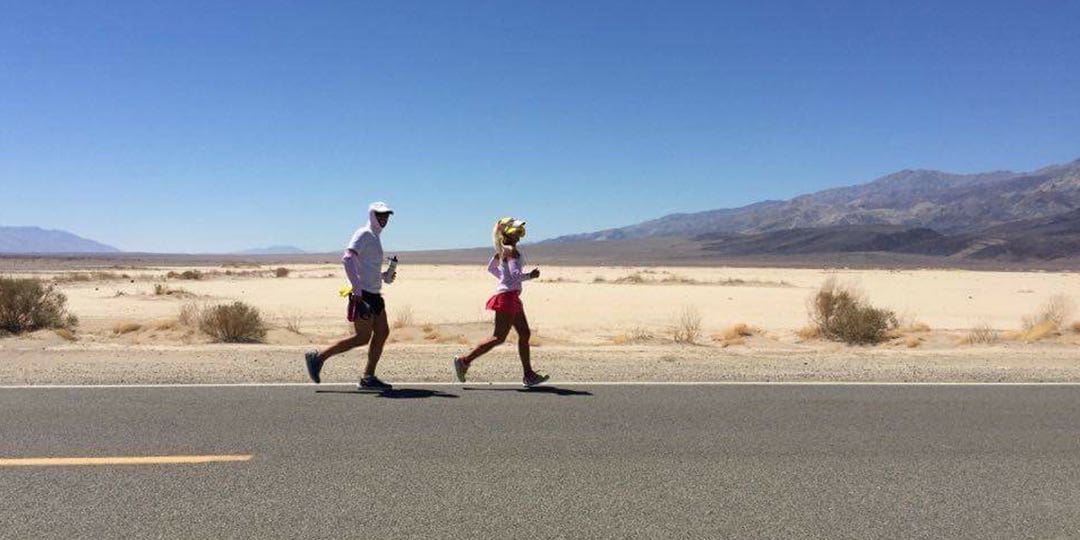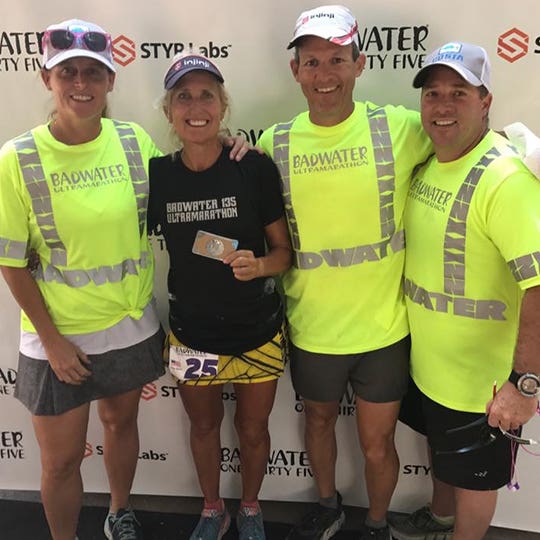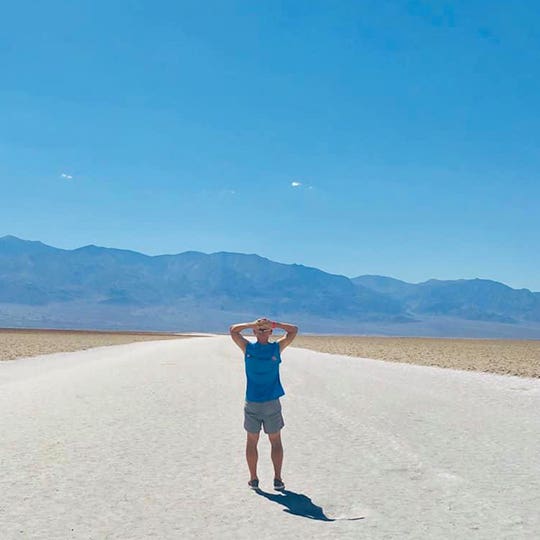The Badwater 135, also known as “The World’s Toughest Foot Race,” is a non-stop 135-mile course from Death Valley to Mt. Whitney in California with a 48-hour time limit. The name comes from the Badwater Basin, or the start line, which is at the lowest elevation in North America. This race ends at 8,300 feet at the trailhead to Mt. Whitney, called the Whitney Portal. Badwater is an invitation-only event and is limited on the number of competitors, creating a high demand to get into this race. This year will be the 43rd race and we are excited to see Team Injinji runners Jonathan Gunderson and Amy Costa at the start line!
So why is this run considered the most demanding and extreme race on the planet?


The runners start below sea level at 280 feet and climb up to 8,300 feet, passing three mountain ranges along the route for a total of 14,600 feet of vertical ascent. There are no aid stations provided by the race and all runners must come prepared with their own crew (a maximum of four people) and supplies including hydration, electrolytes, nutrition, and gear. Tough cutoffs and extreme heat, with temperatures up to 130 degrees, gives this race a high DNF (did not finish) rate of up to 40%.


One of the main obstacles to overcome in the World’s Toughest “Foot” Race is just that – your feet! Proper foot care begins before race day. This includes training in the proper shoes to avoid blisters and knowing what size will work best with the additional swelling from the heat of Badwater. Another common problem to take into consideration beforehand are calluses. Unfortunately, in the heat, calluses can separate from your foot and blister underneath or completely come off. If runners experience blisters due to thick callus build-up during the race, the only real solution at that point is to tape the foot in order to hold the loose skin on. And let’s not forget the toenails. Always keep them trimmed and the edges filed to avoid black nails and blisters under the nails. As always, wearing Injinji's will help prevent skin-on-skin friction to also help prevent blisters from building up in between the toes.
Another major factor for runners at this desert race is the complications that can arise with the extreme heat. Dehydration, heat cramps, heat exhaustion, heat stroke and hyponatremia are all serious issues not to be taken lightly, with the latter two having the possibility of a fatal outcome. To avoid these complications, it is suggested for competitors to heat train regularly, (some runners even include sauna time in their training program), wear the proper sun clothing and gear, apply sunscreen often, and of course consume plenty of both electrolytes and water on race day.
Now do you understand why this is called the World’s Toughest Foot Race?


Despite the difficulty and dangers involved in Badwater, runners still seem to crush this race with amazing times. Current record holders of the 135-mile course are Yoshihiko Ishikawa with a time of 21:33:01 and for the females Patryzja Bereznowska with a finish time of 24:13:24. Gunderson has completed this race seven times, with a personal record of 30:19:00 in 2012 and Costa has crossed the finish line six times with her fastest time being 30:36:44 in 2014. Gunderson’s biggest takeaways from running this race multiple times is to focus on the here and now, keep your head straight and that everyone hurts. “It's easy to believe that what you're going through is unique but understanding that all the runners are going through the furnace and climbing the same peaks helps to refocus yourself when the going gets tough and you don't always feel like you're performing the way you'd like.” Costa’s words of wisdom emphasize the importance of taking care of your body with fluids and food in the first 40 miles which will determine performance for the rest of the race. “The extreme dry heat is what you have to beat! If you do not take food, or care for yourself from the start line you will not make it to the finish line!”
Race day will be held this year from July 19-21 and the Injinji crew will be out there in full force! Follow us on social media for live updates on our runners.
Jonathan Gunderson will be wearing the Ultra Compression OTC for the race. His other top two sock choices are Ultra Run and Trail series.








